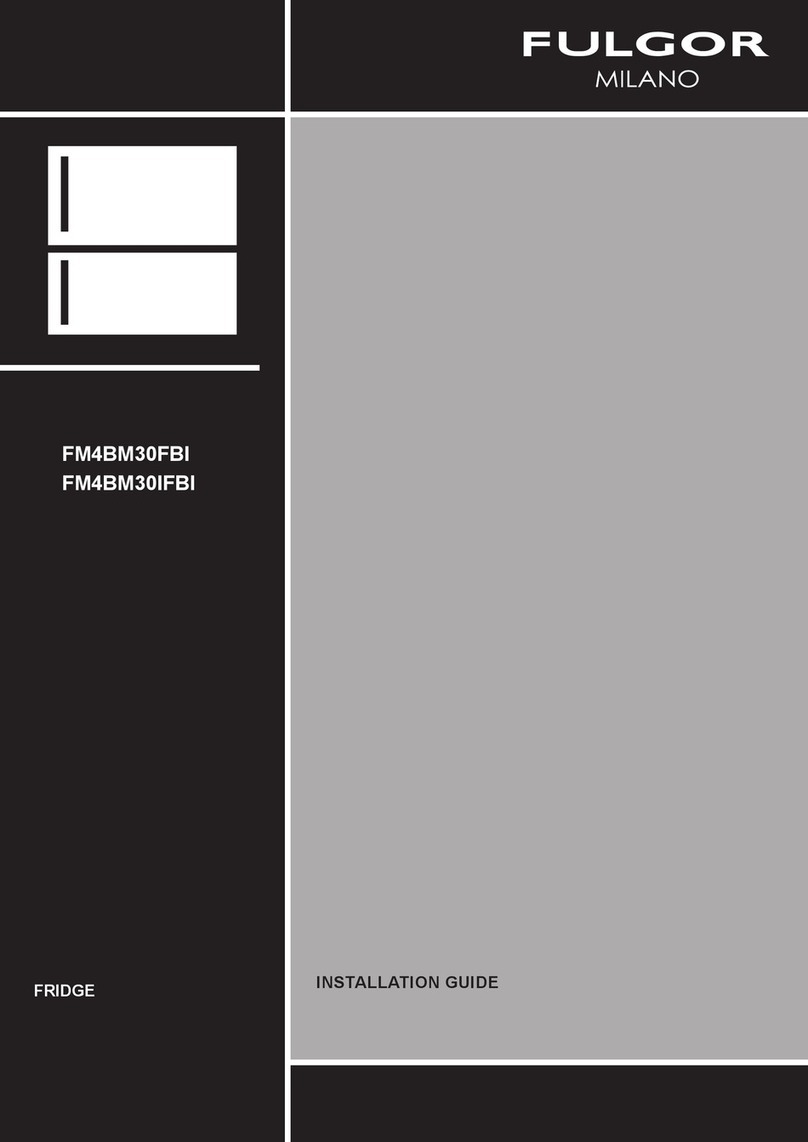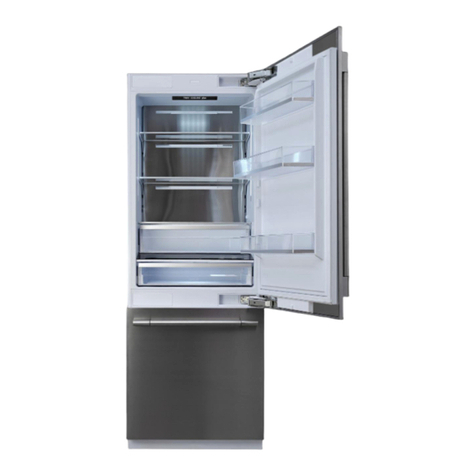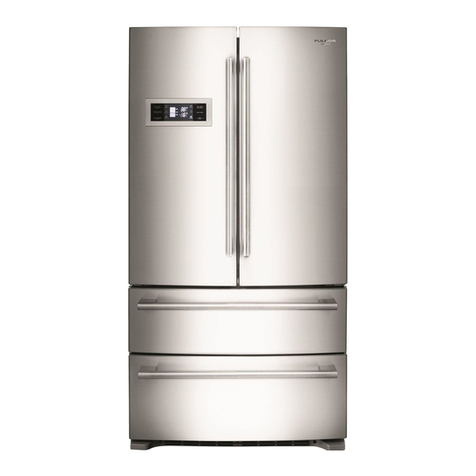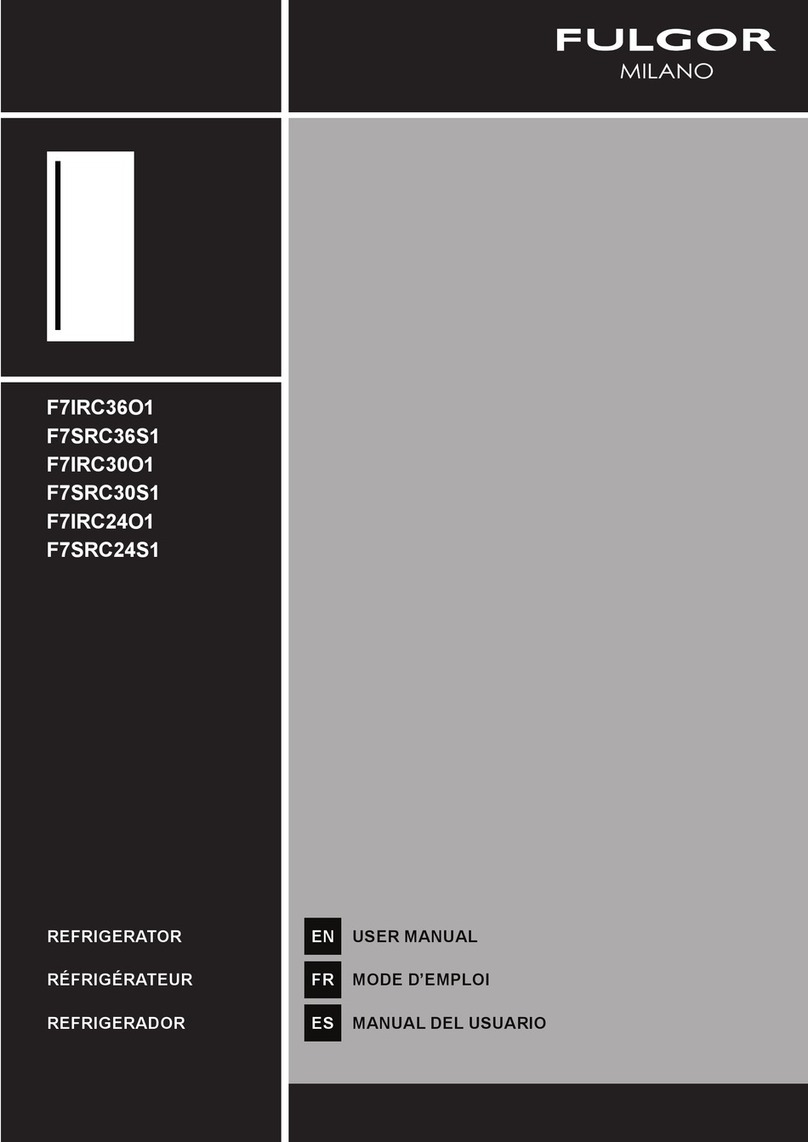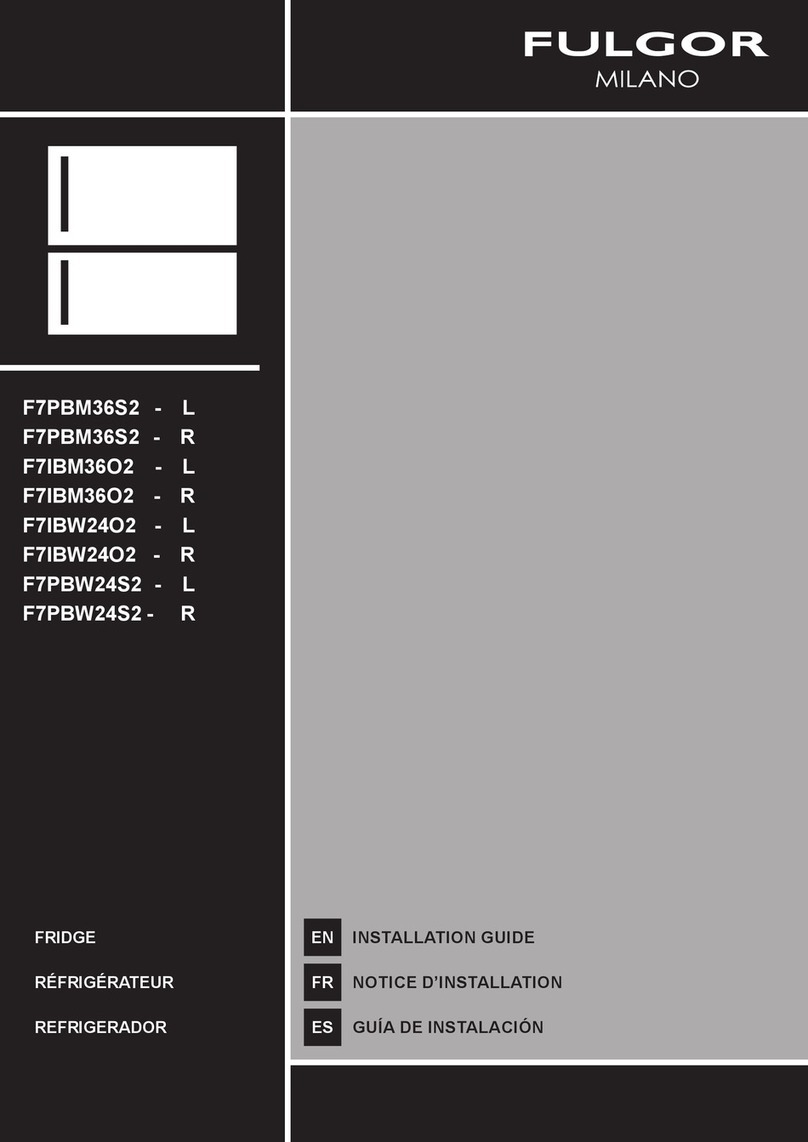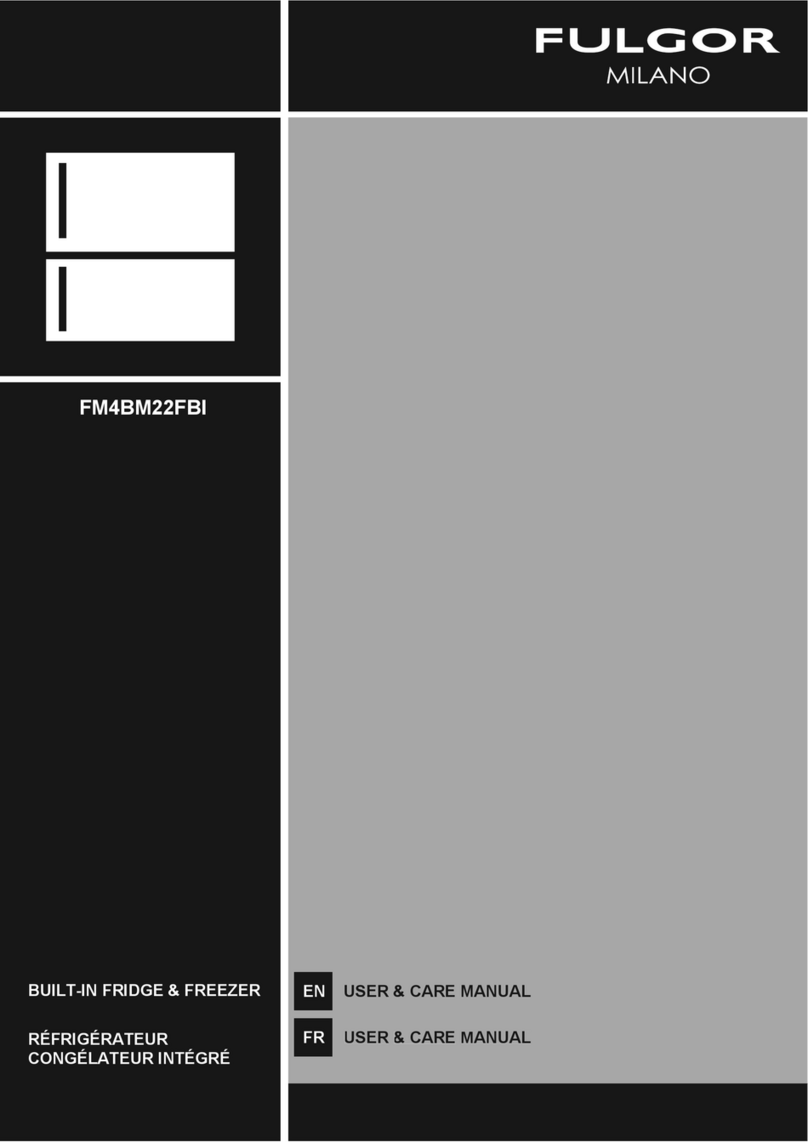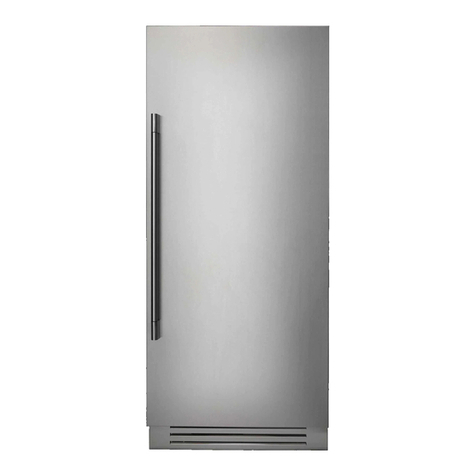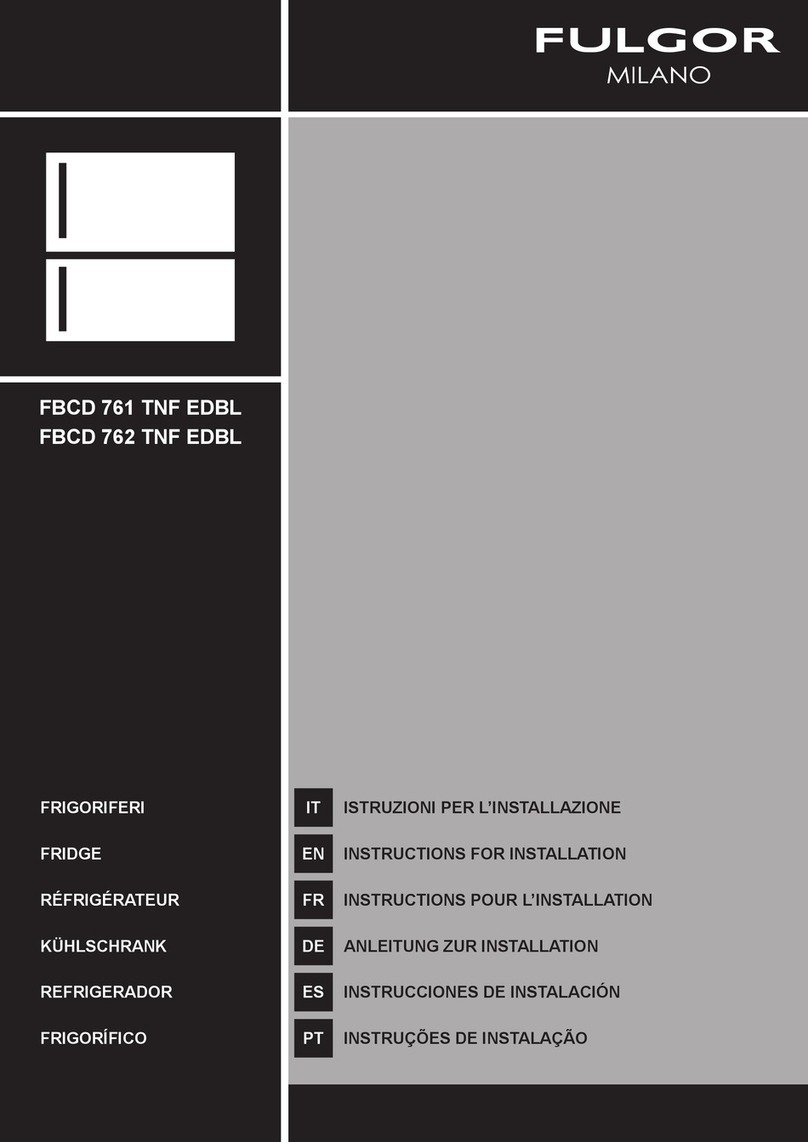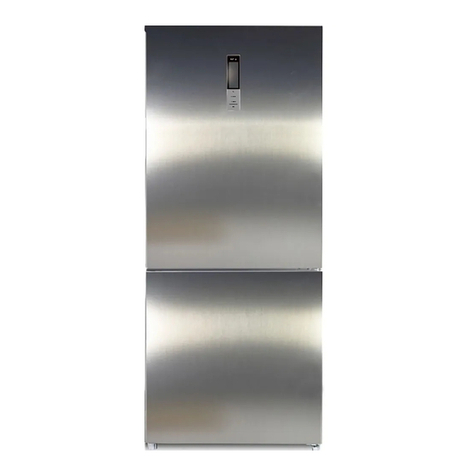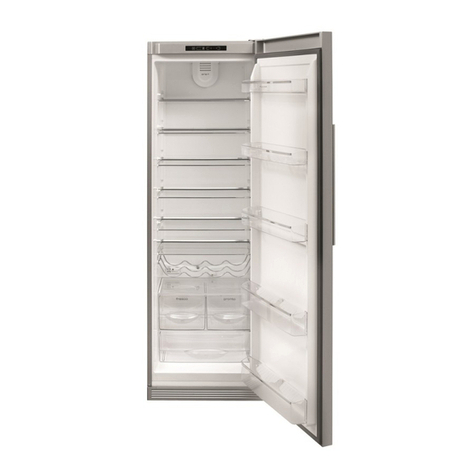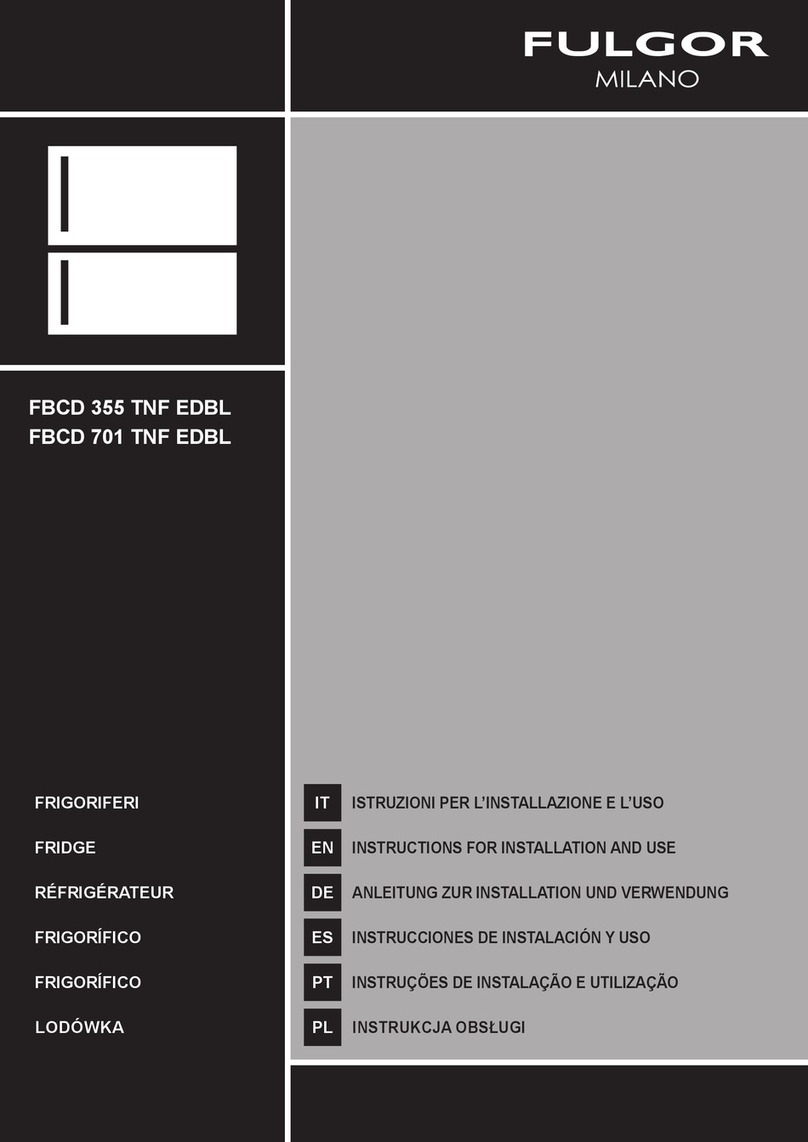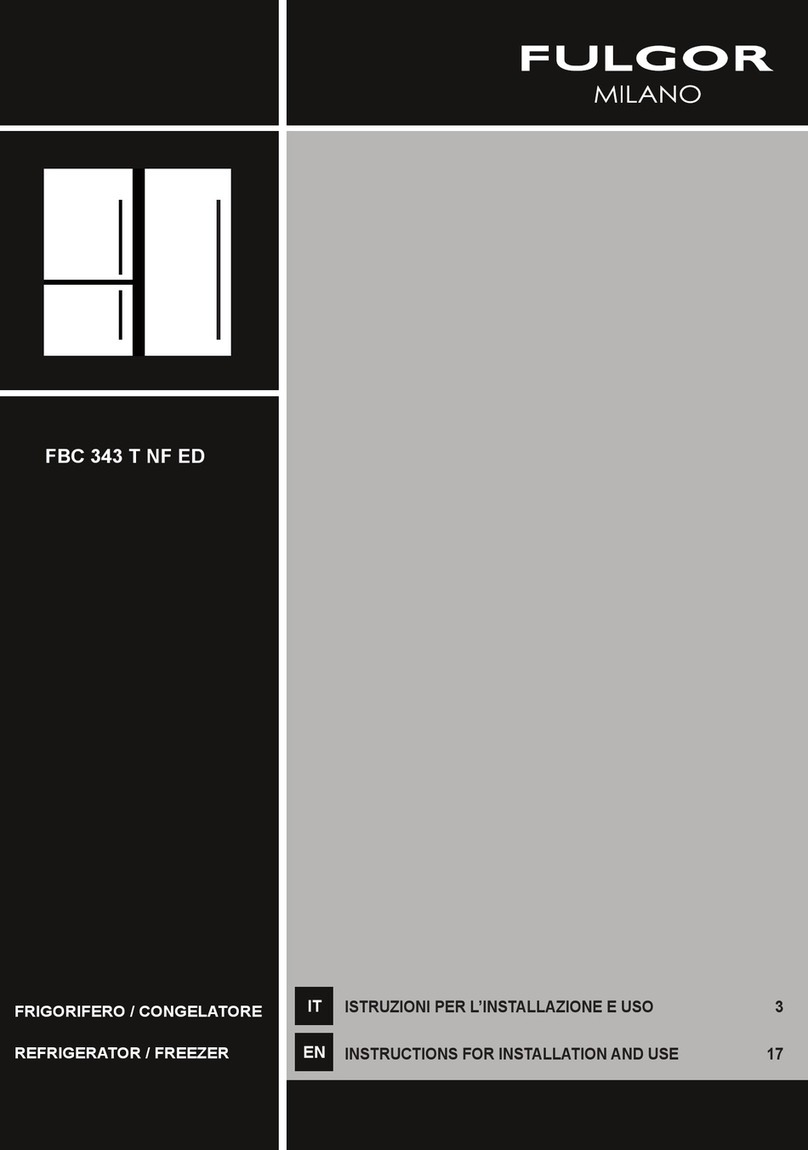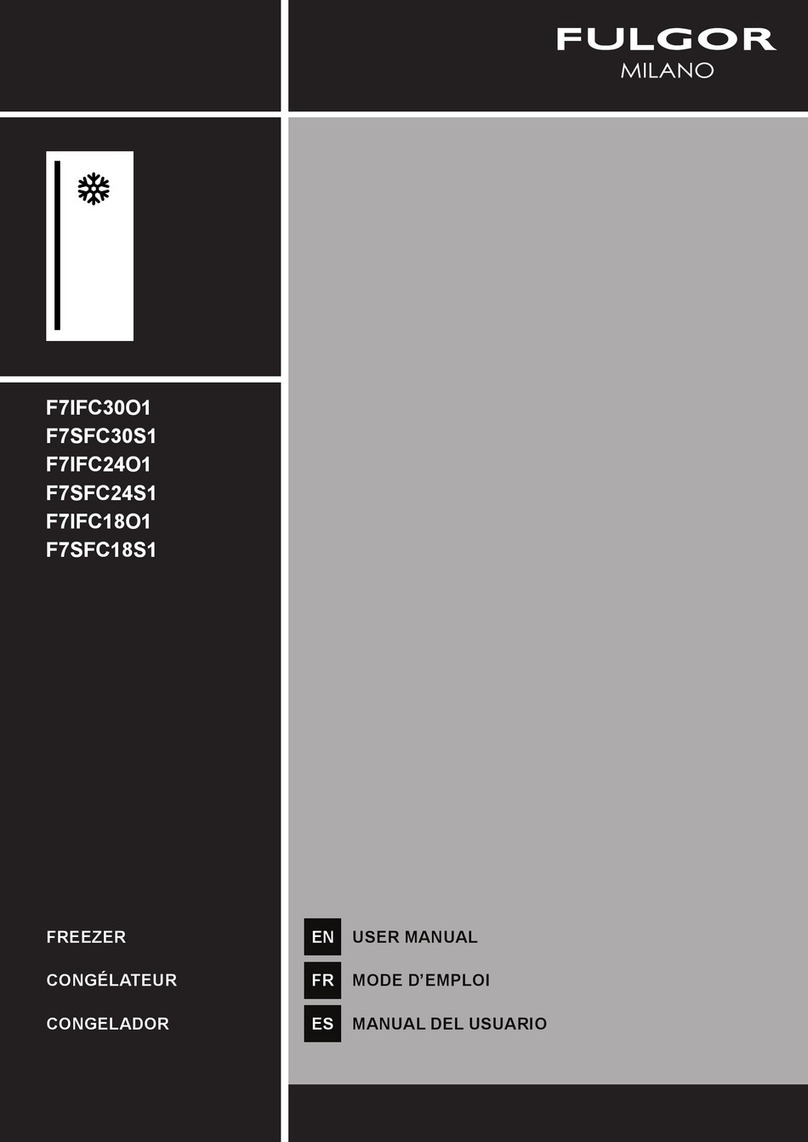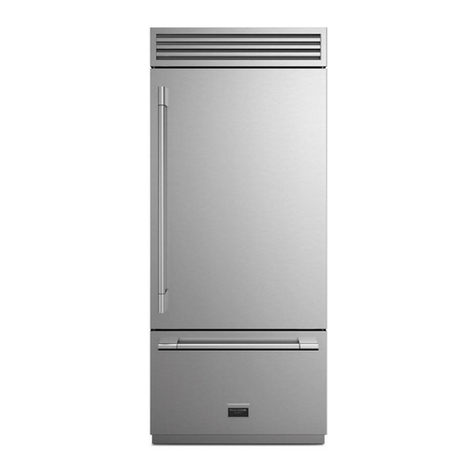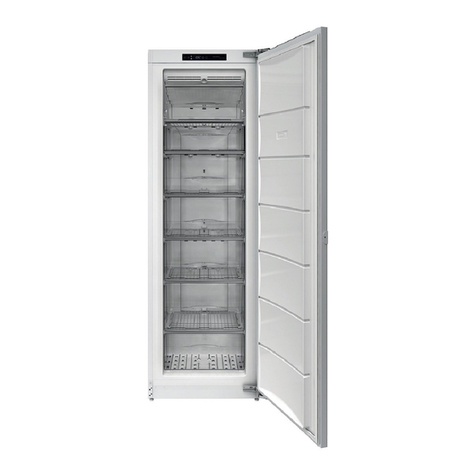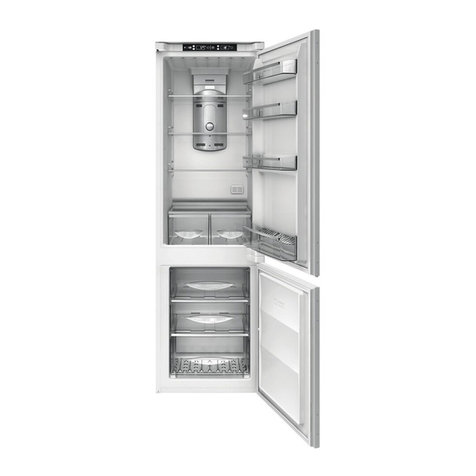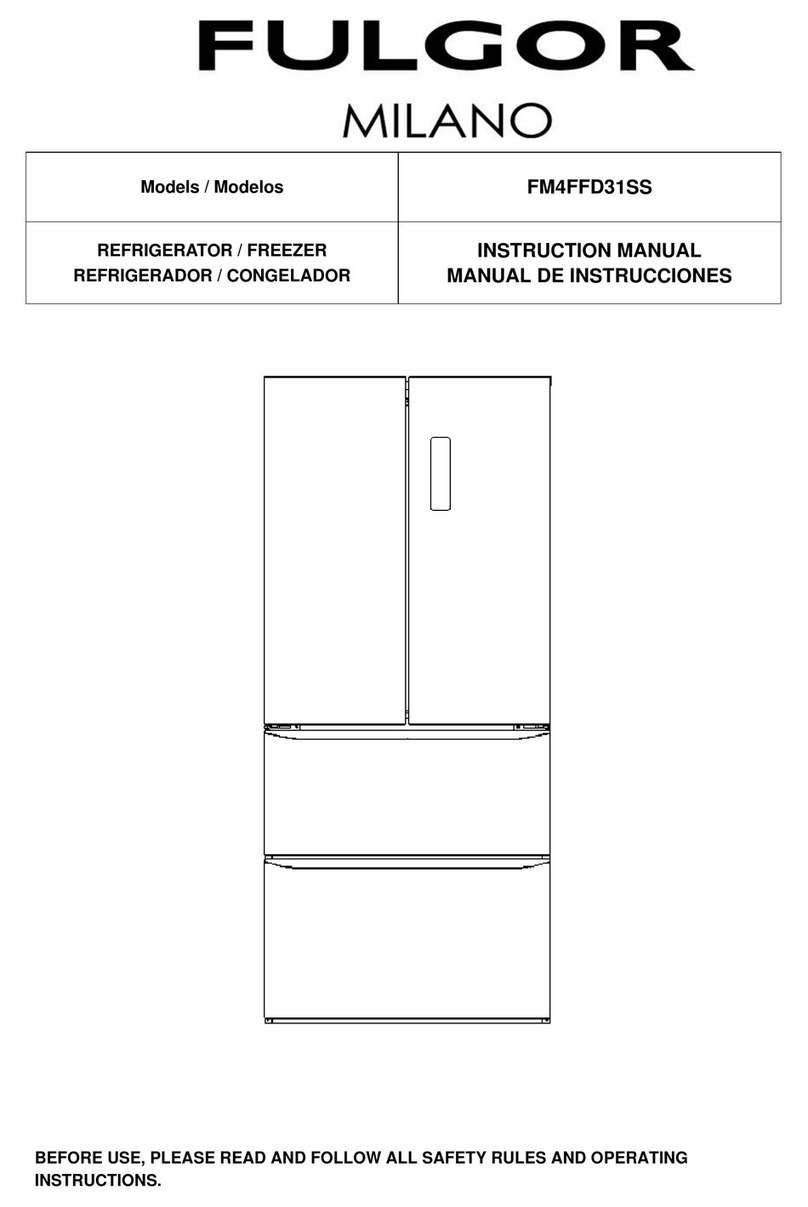Installation of Your Refrigerator
Place your refrigerator on a floor that is strong enough to support the refrigerator when it is fully
loaded. To level your refrigerator, adjust the legs at the front of the refrigerator.
Allow 5 inches of space between the back and sides of the refrigerator, which allows the
proper air circulation to cool the compressor.
Locate the refrigerator away from direct sunlight and sources of heat (stove, heater, radiator, etc.).
Direct sunlight may affect the acrylic coating and heat sources may increase electrical
consumption. Extreme cold ambient temperatures may also cause the refrigerator not to perform
properly.
Avoid locating the refrigerator in moist areas. Too much moisture in the air will cause frost to
form quickly on the evaporator requiring more frequent defrosting of the refrigerator.
Electrical Connection
This refrigerator should be properly grounded for your safety. The power cord of this
refrigerator is equipped with a three-prong plug which mates with standard three
prong wall outlets to minimize the possibility of electrical shock.
Do not under any circumstances cut or remove the third ground prong from the power cord supplied.
For personal safety, this refrigerator must be properly grounded.
This refrigerator requires a standard 115/120 Volt AC ~/60Hz electrical ground outlet with three-prong.
Have the wall outlet and circuit checked by a qualified electrician to make sure the outlet is properly
grounded. When a standard 2-prong wall outlet is encountered, it is your responsibility and obligation
to have it replaced with a properly grounded 3-prong wall outlet.
The cord should be secured behind the refrigerator and not left exposed or dangling to prevent
accidental injury.
The refrigerator should always be plugged into its own individual electrical outlet which has a voltage
rating that matches the rating label on the refrigerator. This provides the best performance and also
prevent overloading house wiring circuits that could cause a fire hazard from overheated. Never
unplug the refrigerator by pulling the power cord. Always grip the plug firmly and pull straight out from
the receptacle. Repair or replace immediately all power cords that have become frayed or otherwise
damaged. Do not use a cord that shows cracks or abrasion damage along its length or at either end.
When moving the refrigerator, be careful not to damage the power cord.
Extension Cord
Because of potential safety hazards under certain conditions, it is strongly recommended that you do
not use an extension cord with this refrigerator. However, if you must use an extension cord it is
absolutely necessary that it be a UL/CUL-Listed, 3-wire grounding type refrigerator extension cord
having a grounding type plug and outlet and that the electrical rating of the cord be 115 volts and at
least 10 amperes.
